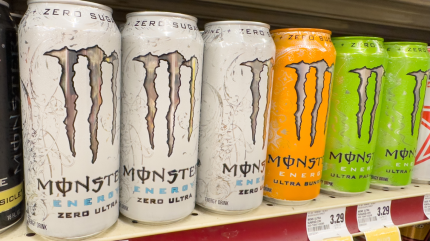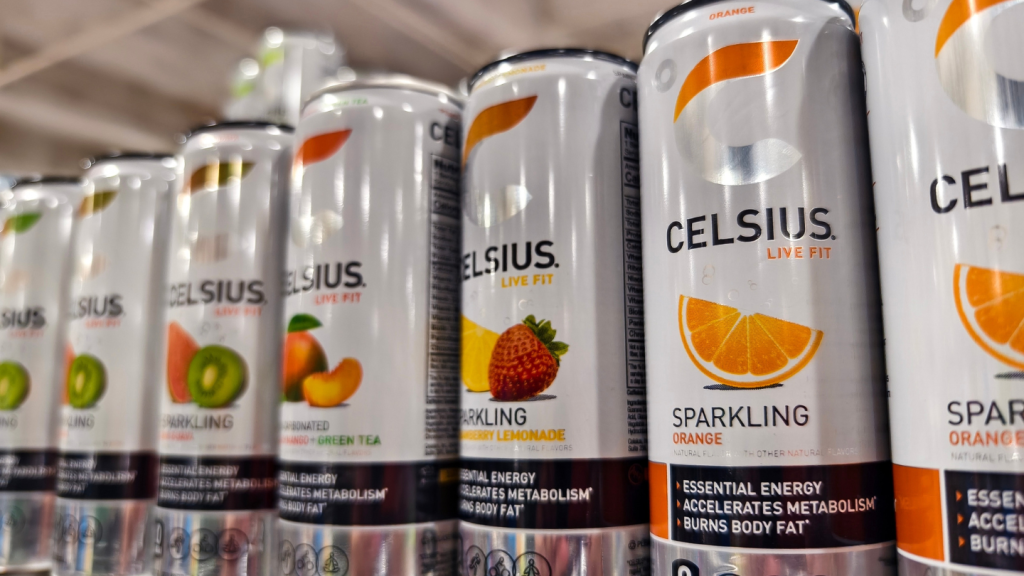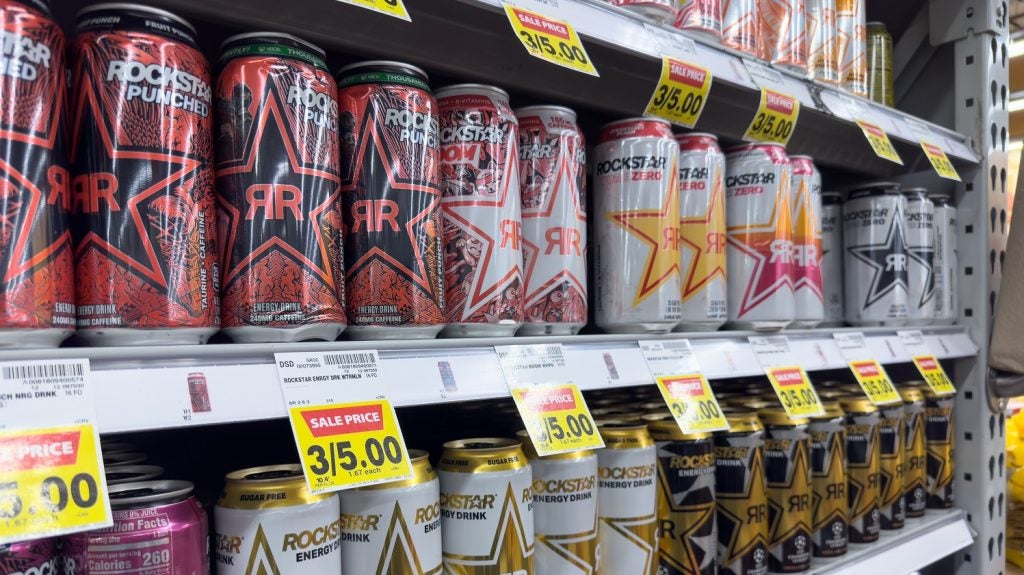
Last week, US-based energy drink majors Monster Beverage Corp. and Celsius Holdings both posted seemingly positive second-quarter results.
The Monster Energy brand owner saw top and bottom-line growth year-on-year, with its energy drinks segment sales increasing 3.3% to $1.74bn in the three-month period. Meanwhile, Celsius’ revenues were up 23% and its adjusted EBITDA jumped 29% to $100.4m for the quarter.
And yet, the overhanging message from both US companies’ respective calls with analysts following their results was that there had been a deceleration in growth in their domestic countries.
Monster co-CEO Rodney Sacks said: “The energy drink category in the US and in certain other countries experienced lower growth rates in the second quarter.”
John Fieldy, chief executive of Celsius, echoed similar thoughts: “It looks like, overall in the category, consumers are maybe taking a pause. There’s a lot of pressure from interest rates. We know the pressures are out there within the news.”
Both caffeinated drinks makers saw their share prices fall after posting strong numbers, so what triggered this energy drinks “slowdown” in the US, and what does it mean for the future of the category in this market?

US Tariffs are shifting - will you react or anticipate?
Don’t let policy changes catch you off guard. Stay proactive with real-time data and expert analysis.
By GlobalDataConvenience store slowdown
Sacks said last week that the lower growth rates were “primarily driven by a reduction in consumer spending and the lower foot traffic in the convenience channel.
“We’ve seen reports of foot traffic convenience channel being down by as much as 3% to 3.5%. And then a swing towards more grocery mass online purchasing.”
Meanwhile, Fieldy said that “one of the largest convenience chains” was suffering from a slowdown in the quarter as well, pointing to this as the chief concern for the US market.
Tom Evans, a senior data analyst at Just Drinks’ parent group GlobalData, says that the energy drinks sector is more premium with higher price-points than the rest of soft drinks.

“Although the economy continues to show outward signs of strength, macroeconomic factors such as higher mortgage costs have resulted in consumers being more cautious, especially as far as impulse items are concerned.
“This has resulted in slightly more weakness in the convenience segment which has impacted energy drinks in Q2-2024 and resulted in the category slowing slightly,” he says.
Robert Moskow, an analyst at TD Cowen, wrote in an investors note last week that the convenience channel “remains the largest channel for energy drinks by far, accounting for circa two-thirds of category sales”, making it more likely for the segment to take a hit when fewer consumers shop there.
Sacks also described Monster as a “blue-collar brand” which has led to it being more hard-pressed than other competitors with macro-economic pressures. He added that the current slowdown in US energy drinks is “unprecedented”, noting that prior volume declines occurred during aberrant macro backdrops (the financial crisis and COVID lockdowns).
Despite the convenience channel slowdown, Celsius saw its other channels perform well, including a 41% increase year-on-year in its Amazon sales, reaching $39.9m. Meanwhile, club channel sales increased 30% to $88m in the second quarter.
“There’s some challenges within the overall consumer. We’re really trying to understand that and we’re going to put some additional investments, strategic targeted investments, both on top line and below the line to continue to drive growth within our portfolio,” Fieldy added.
How drastic is the slowdown?
Jim Watson, senior beverage analyst at Rabobank, tells Just Drinks that energy drinks are “still among the fastest growing segments within beverages… in the US”, including alcoholic drinks since “alcohol is not performing well either.”.
He adds that it “absolutely is a slowdown. This is a category that’s been growing double digits, or certainly high-single. The whole category has been growing very, very well for a long time. So even year to date, it’s still growing about 5% in our kind of measured channels… it’s just the last couple months that have been well below that.”
Evans at GlobalData agrees that the “resilience of energy drinks in the US” will continue to show and the sector will continue to see “mid-single digit growth” in 2024.
“The energy drink category remains a key growth segment within soft drinks in the US, with the innovation helping the category to stay at the forefront of these consumer trends,” he adds.
Nevertheless, Watson explains the importance of the convenience channel for energy drinks as a sector, especially when compared to other beverage markets.
“Energy drinks compared to other segments in the US really over index in convenience stores. And when you buy there, you’re normally buying them one can at a time, and you’re paying kind of sole rates for it,” he says.
“If you buy in grocery, you’re much more likely to be buying a multi pack. You’re comparing prices for the best deal because it’s for future consumption. But if you’re doing immediate consumption, you’re paying up to have that energy drink now, and convenience stores themselves have seen a slowdown in traffic.”
However, he notes that consumers are not necessarily trading down, and there is actually volume decline in both grocery stores and the convenience channel.
“I think it is somebody who would normally shop the convenience store that’s just giving up the entire trip to the convenience store. It’s not even that they’re going in and just not buying an energy drink. They’re just not going at all.”

At Monster, management is still set on implementing a 5% price increase on its core brands in November, despite the macroeconomic situation and consumer spending squeeze.
Moskow said in a note that the price increase “risks exacerbating the elasticity impact.”
He added: “While we agree with their logic, the risk of exacerbating the elasticity impact will go higher. Ultimately, we think MNST [Monster] will need to promote back a significant portion of the higher pricing as it goes into the market.”
Will there be a bounce back?
There is a general sense that energy drinks in the US is a resilient and robust market which will be able to weather a slowdown of sorts this year.
As Watson at Rabobank says: “I think energy drinks on a two, three or five-year basis will stay one of the best, if not the best, beverage segment to be in. I don’t know if they’re going to recover really quickly in the next six months though.”
GlobalData’s Evans agrees, and notes that the “category remains a key growth segment within soft drinks in the US, with the innovation helping the category to stay at the forefront of these consumer trends.
“In terms of demographics, this growth will be driven by younger demographics such as Gen Z, who will continue to establish new consumption occasions for RTD energy drinks over the coming years.”
A recent GlobalData consumer survey showed that “energy-boosting ingredients” were a key driver of purchase for 24.8% of people asked how influential certain factors are when making purchasing decisions in food and beverages.
“Long term, energy drinks is projected to continue to take some volume from the carbonated soft drinks segment for long term, due to providing that extra level of functionality,” Evans claims.
“This has resulted in many major beverage companies trying to increase their presence in the energy drink category, as it is growing and it’s highly profitable.”
In June, a GlobalData report predicted a 4.2% increase in the sales volumes of energy drinks this year to 4.02bn litres, or 708.5m unit cases, forecasting it to see the fastest growth in US soft drinks in 2024. The data and analytics group is due to update its energy drinks data for the second quarter in the US at the end of August.
Watson adds: “The innovation pipeline is still super strong. Companies are still investing in marketing.
“So I think if you were to look at the corporate attitude towards the category, you’d equally see that they believe, putting their money where their mouth is, that the category in good shape for the medium term.”



